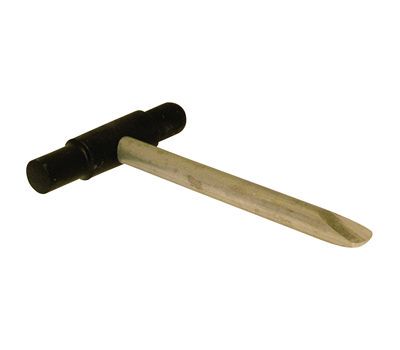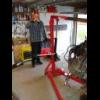The MOT test is not nearly aggressive enough, considering the safety implications of structural rust, however there is not much else to do it the methodology is limited to tapping with a "toy" hammer. A better method would be to do a torsional stiffness test, but that would need some heavy and expensive equipment, and a lot of man-hours attaching it to the vehicle. I can just imagine oversills and the bodger's other delight, inner sill repair panels, buckling during the test, not forgetting heelboards where the subframe mount stiffners have not been welded to the inner sills. Oh, and flip fronts flopping.....
However, to keep to the OP's immediate needs, the answer is that only the MOT tester, doing all that he is allowed to do, can tell whether it is a pass or fail. From a distance, we can only give meaningful opinions if we can see holes within the prescribed distance of subframe, suspension and seat belt mounts etc, but we can't feel for weakness.
But what I would add to the opinions already given is that, as in any rust problem with any car, the sooner it is properly restored, the better, because rust spreads, and it will be cheaper to fix it properly now, rather than later. Everyone's economic situation is different, and frankly none of our business, as we respect privacy, so only the OP can assess whether he should have some cheapish temporary repairs, which will need re-done properly later, or maybe take out a loan and have the lot done properly, once and for all. Having had two Minis ruined by cheap "MOT standard" repairs in the past, my feelings nowadays are that while interest rates remain low, I would likely get a loan to finance doing it properly. The OP may of course be fairly affluent, and can pay cash, again not our business, but in that case I would strongly suggest going for a full restoration job asap.
Actually, there would be an interesting opportunity for a finance company, in partnership with a body restorer. Lend the money to fix classic cars, based on the value of the restored car being more than the loan of course, and their being comprehensive insurance cover. It might not be viable on basic models, but a nicely restored special edition may have sufficient value to secure a loan of at least a sizeable part of the restoration cost.
![]()




















